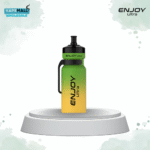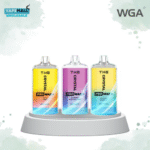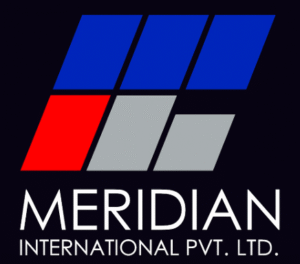In today’s visually driven market, color plays a crucial role in how consumers perceive and experience food products. From vibrant candies to bright beverages, the appeal often starts with what the eyes see. That’s where FD&C food dyes come in—synthetic color additives approved for use in food, drugs, and cosmetics. Behind these brilliant hues are the skilled manufacturers of synthetic food colors who blend science, safety, and innovation to meet the global demand for vibrant, safe, and stable colors.
In this article, we delve into the world of FD&C food dyes, their significance in the food industry, and how leading manufacturers like Standardcon have become trusted names in delivering top-quality synthetic food colors.
What Are FD&C Food Dyes?
FD&C stands for Food, Drug, and Cosmetic—a labeling system regulated by the U.S. Food and Drug Administration (FDA). FD&C dyes are synthetic color additives permitted for use in food products, pharmaceuticals, and personal care items. These dyes are widely used because they provide consistent, stable, and vibrant coloring that natural alternatives may not always offer.
Some commonly used FD&C food dyes include:
- FD&C Red No. 40 (Allura Red)
- FD&C Yellow No. 5 (Tartrazine)
- FD&C Blue No. 1 (Brilliant Blue)
- FD&C Yellow No. 6 (Sunset Yellow)
These dyes are synthetically produced from petroleum-derived raw materials and undergo rigorous quality checks to ensure safety for human consumption.
Why FD&C Food Dyes Are Preferred in the Food Industry
In a competitive food and beverage market, appearance directly influences buying decisions. Here are several reasons why FD&C food dyes remain a top choice:
1. High Stability
FD&C dyes resist degradation under light, heat, and pH fluctuations, making them ideal for packaged foods, beverages, and baked goods.
2. Vibrancy
They offer bold, consistent hues that can be difficult to replicate with natural colorants, especially in high-moisture or heat-processed foods.
3. Cost-Effectiveness
Synthetic food colors are often more economical than natural alternatives, making them viable for mass production.
4. Wide Range of Shades
They can be blended to produce virtually any shade, offering manufacturers creative flexibility.
The Role of Manufacturers of Synthetic Food Colors
Behind every successful food product lies a team of experts ensuring color quality, safety, and regulatory compliance. Manufacturers of synthetic food colors play a vital role in:
- Producing high-purity FD&C dyes and lakes
- Maintaining strict adherence to food safety regulations (FDA, FSSAI, EU, etc.)
- Customizing shades based on client specifications
- Providing documentation like MSDS, COA, and regulatory certificates
- Ensuring batch-to-batch consistency for large-scale production
Standardcon: A Leader Among Manufacturers of Synthetic Food Colors
As one of the reputed manufacturers of synthetic food colors, Standardcon stands out for its commitment to quality, compliance, and customer satisfaction. The company specializes in the production and export of FD&C certified dyes, lakes, and blends tailored for the food, pharmaceutical, and cosmetic industries.
Product Range Includes:
- FD&C Dyes (Water-soluble)
- FD&C Aluminum Lakes (Oil-dispersible)
- Custom color blends
- High-purity powders and granules
All products undergo stringent quality checks and are manufactured in ISO-certified, GMP-compliant facilities.
Applications of FD&C Food Dyes in Industry
FD&C food dyes are used across various segments:
✅ Confectionery
Bright reds, yellows, and blues add visual appeal to candies, jellies, and chewing gums.
✅ Beverages
From flavored waters to soft drinks, synthetic dyes maintain color stability even in acidic environments.
✅ Baked Goods
FD&C colors are used in icing, cake decorations, and sponge cakes to create eye-catching visuals.
✅ Dairy Products
Flavored yogurts and milk-based desserts often rely on FD&C colors for their signature look.
✅ Pharmaceuticals and Cosmetics
Tablets, syrups, creams, and shampoos use these dyes for branding, differentiation, and consumer acceptance.
Safety and Regulatory Compliance
While synthetic food dyes occasionally draw public concern, regulatory authorities across the world have maintained strict safety protocols. Manufacturers like Standardcon follow international standards including:
- FDA (U.S. Food and Drug Administration)
- FSSAI (Food Safety and Standards Authority of India)
- EFSA (European Food Safety Authority)
- BIS (Bureau of Indian Standards)
Each batch is tested for contaminants, heavy metals, and purity levels. Reputable manufacturers also provide extensive documentation for traceability and transparency.
The Future of Synthetic Food Colors
With innovation driving the future of food processing, synthetic food dyes continue to evolve:
🔬 Microencapsulation
Improving the shelf life and controlled release of colors in food matrices.
🌱 Clean-Label Solutions
Some manufacturers are blending synthetic and natural dyes to meet market demand for transparency.
🌍 Sustainable Manufacturing
Eco-friendly production processes and reduced carbon footprints are becoming industry norms.
🧪 Advanced R&D
Customization and specialty blends to meet brand-specific needs for global markets.
As a forward-thinking company, Standardcon continues to invest in R&D, sustainability, and customer-centric product development.
How to Choose the Right Manufacturer of FD&C Food Dyes
Not all synthetic color manufacturers offer the same quality. Here are some tips when selecting a supplier:
- Certifications: Ensure they meet GMP, ISO, and food safety certifications.
- Customization: Look for flexibility in shade and format (dye, lake, powder, granule).
- Documentation: They should provide technical data sheets and compliance certificates.
- Global Shipping: Ability to handle bulk orders and international regulations.
- Customer Support: Responsive technical and logistics support for smooth operations.
Standardcon checks all these boxes, offering a seamless experience from sampling to final delivery.
Conclusion
In a world where first impressions matter, color is not just an aesthetic choice—it’s a business tool. FD&C food dyes, with their vibrant shades and dependable performance, continue to be essential for the food and allied industries. At the heart of this supply chain are the manufacturers of synthetic food colors, ensuring that every product not only looks great but meets the highest safety and regulatory standards.
With its commitment to quality, innovation, and global compliance, Standardcon is proud to be a trusted name among synthetic food color suppliers. Whether you’re a food technologist, brand owner, or bulk distributor, Standardcon provides consistent, safe, and effective color solutions tailored to your needs.
- FD&C Food Dyes: The Science of Color and the Trusted Role of Synthetic Food Color Manufacturers
- That’s where FD&C food dyes come in—synthetic color additives approved for use in food, drugs, and cosmetics. Behind these brilliant hues are the skilled manufacturers of synthetic food colors who blend science, safety, and innovation to meet the global demand for vibrant, safe, and stable colors.
- fd&c food dyes, manufacturers of synthetic food colors
Related posts:
 Best Website Designer and Web Design Solutions with Cyberworx Technologies
Best Website Designer and Web Design Solutions with Cyberworx Technologies
 Enjoy Ultra 9000 Box of 10 – Power, Flavour, and Convenience Combined
Enjoy Ultra 9000 Box of 10 – Power, Flavour, and Convenience Combined
 Crystal Pro Max + 10000 Box of 10: Long-Lasting Flavour from a Trusted Vape Store in UK
Crystal Pro Max + 10000 Box of 10: Long-Lasting Flavour from a Trusted Vape Store in UK
 Outrank Competitors with Help from a Trusted Denver SEO Agency
Outrank Competitors with Help from a Trusted Denver SEO Agency
 Integrative Neuro Therapy Certification – Certified Training in Functional & Holistic Approaches
Integrative Neuro Therapy Certification – Certified Training in Functional & Holistic Approaches
 Everything You Need to Know About Lifeguard Certification Exams
Everything You Need to Know About Lifeguard Certification Exams
 Anoka Web Design Made Easy: Create a Stunning Website That Works
Anoka Web Design Made Easy: Create a Stunning Website That Works
 Hire a Freelance SEO Expert and Rank Your Website Faster in 2025
Hire a Freelance SEO Expert and Rank Your Website Faster in 2025








